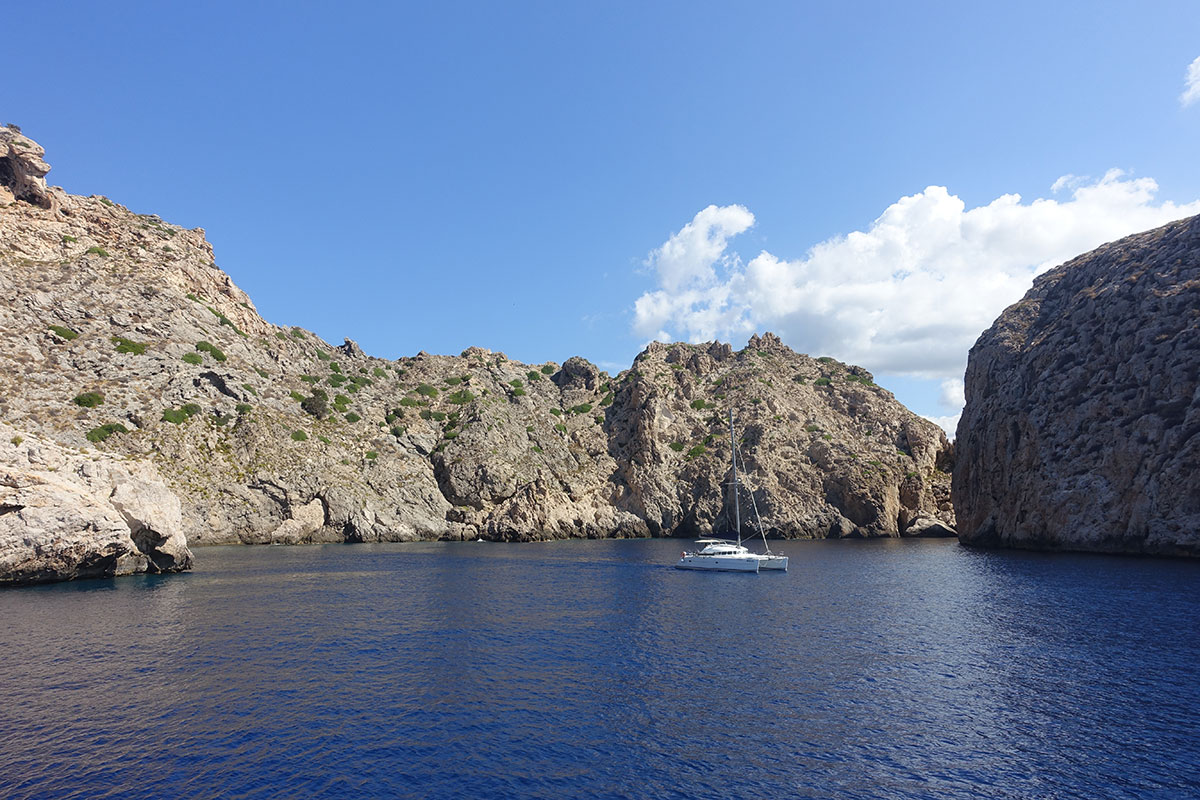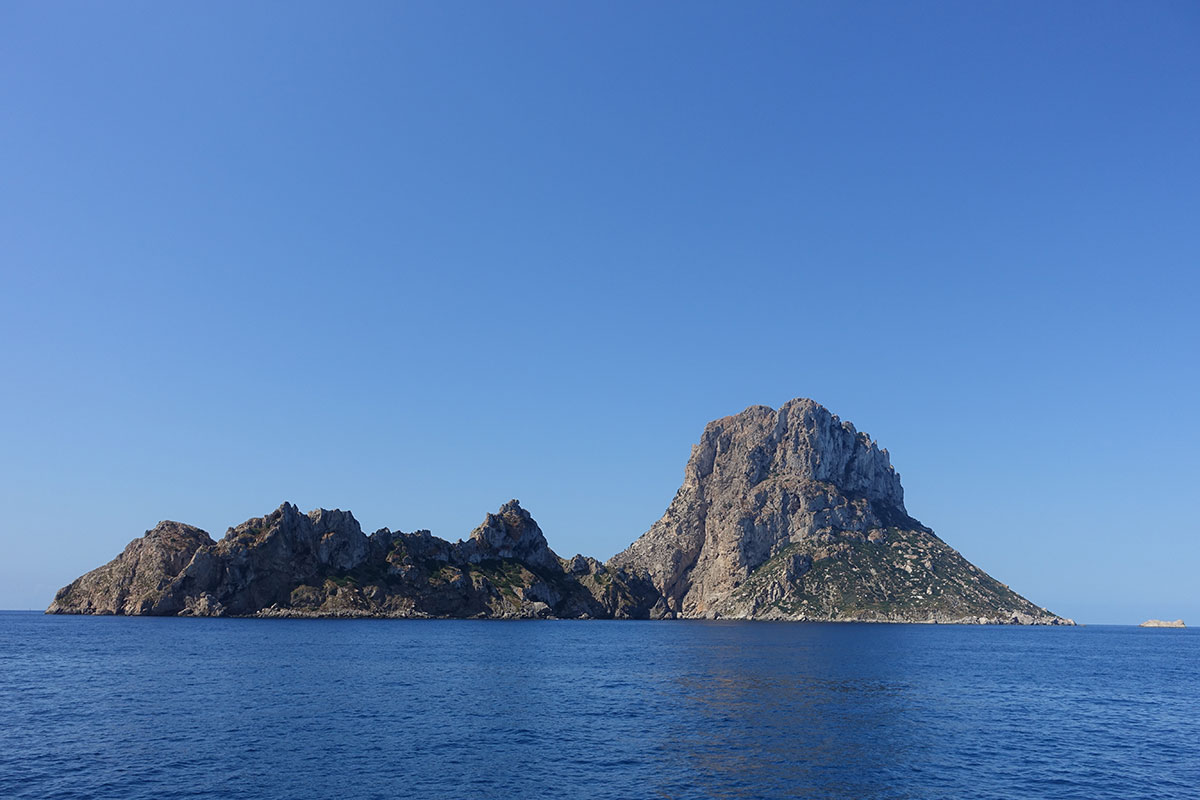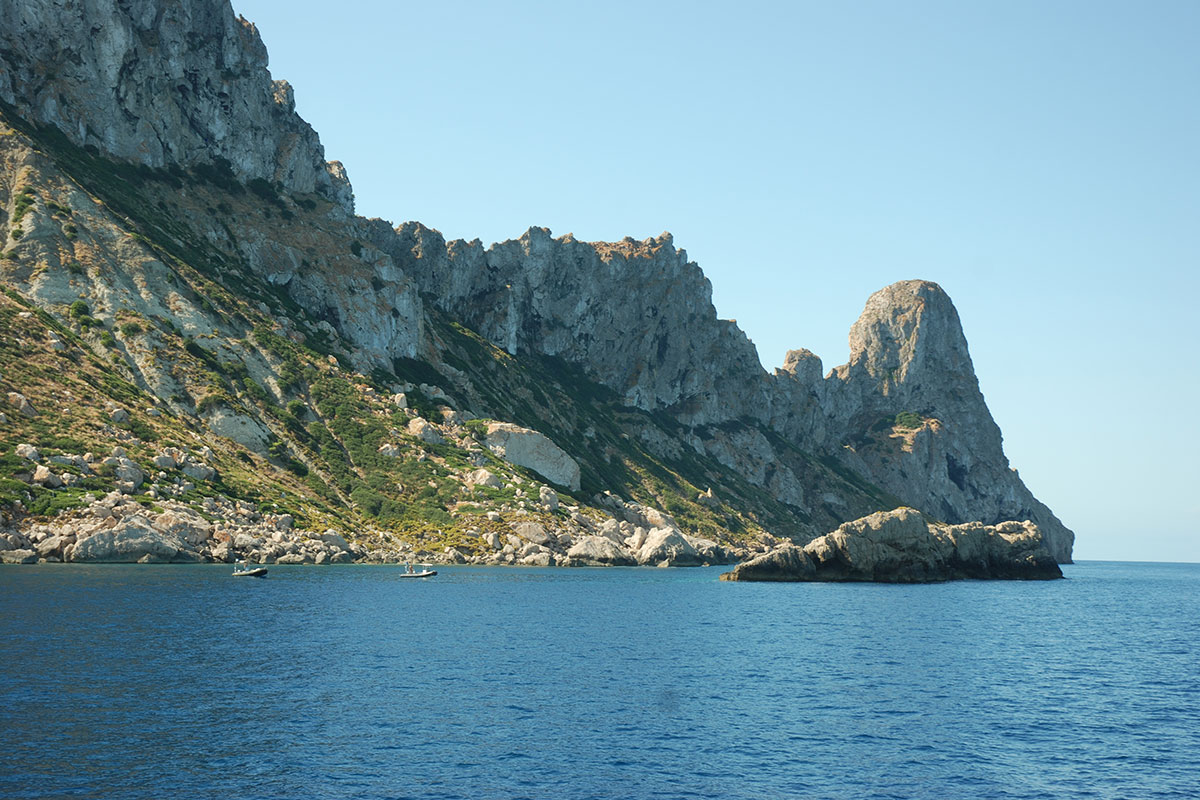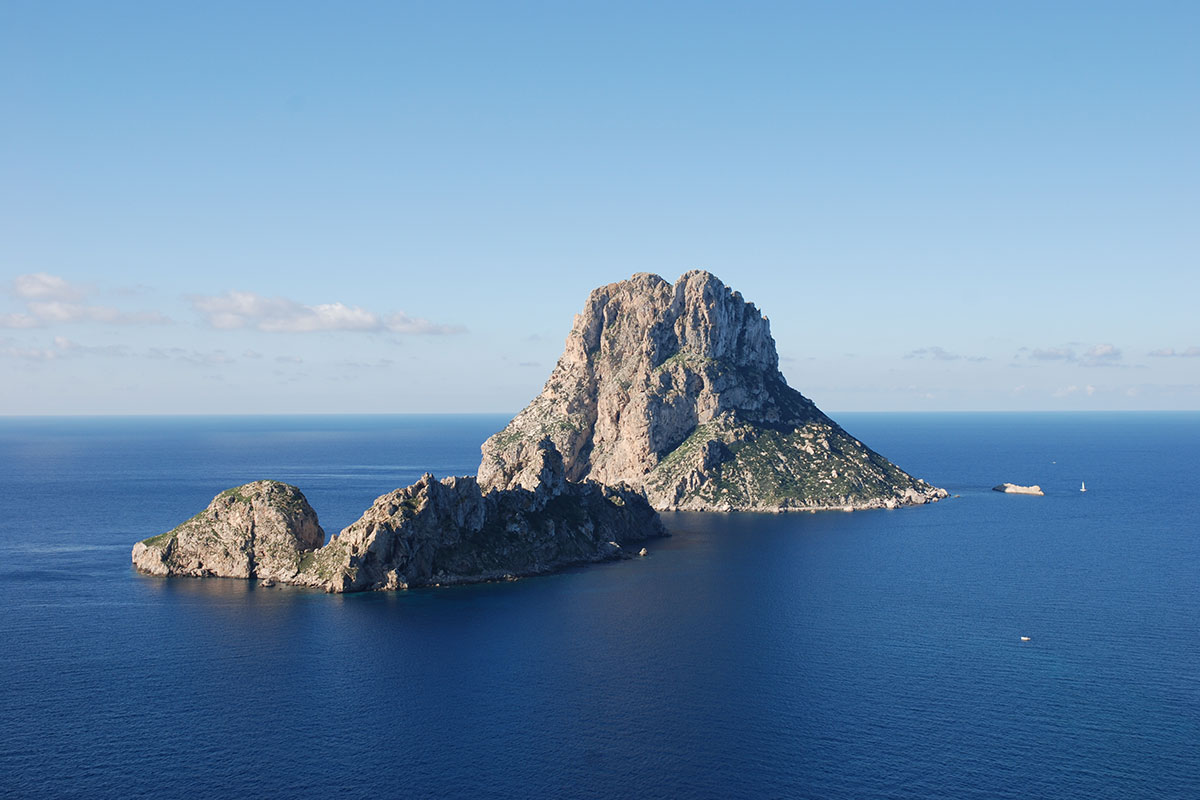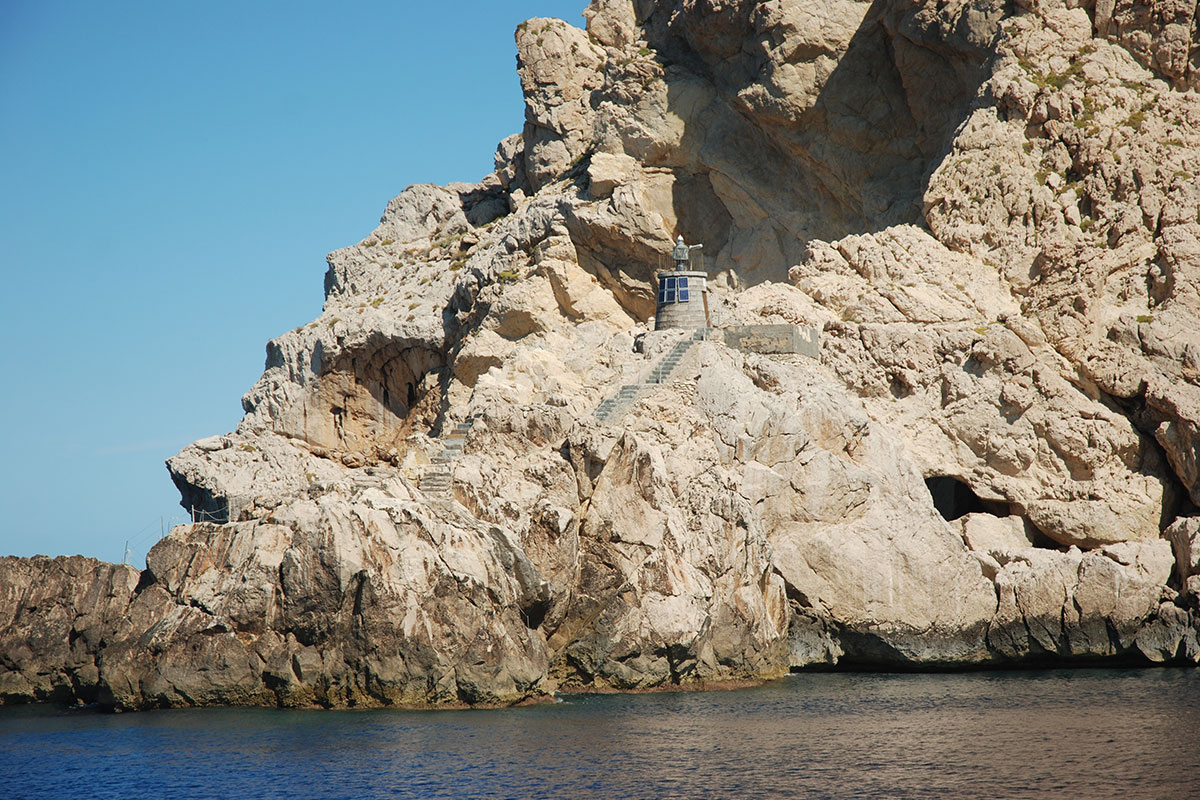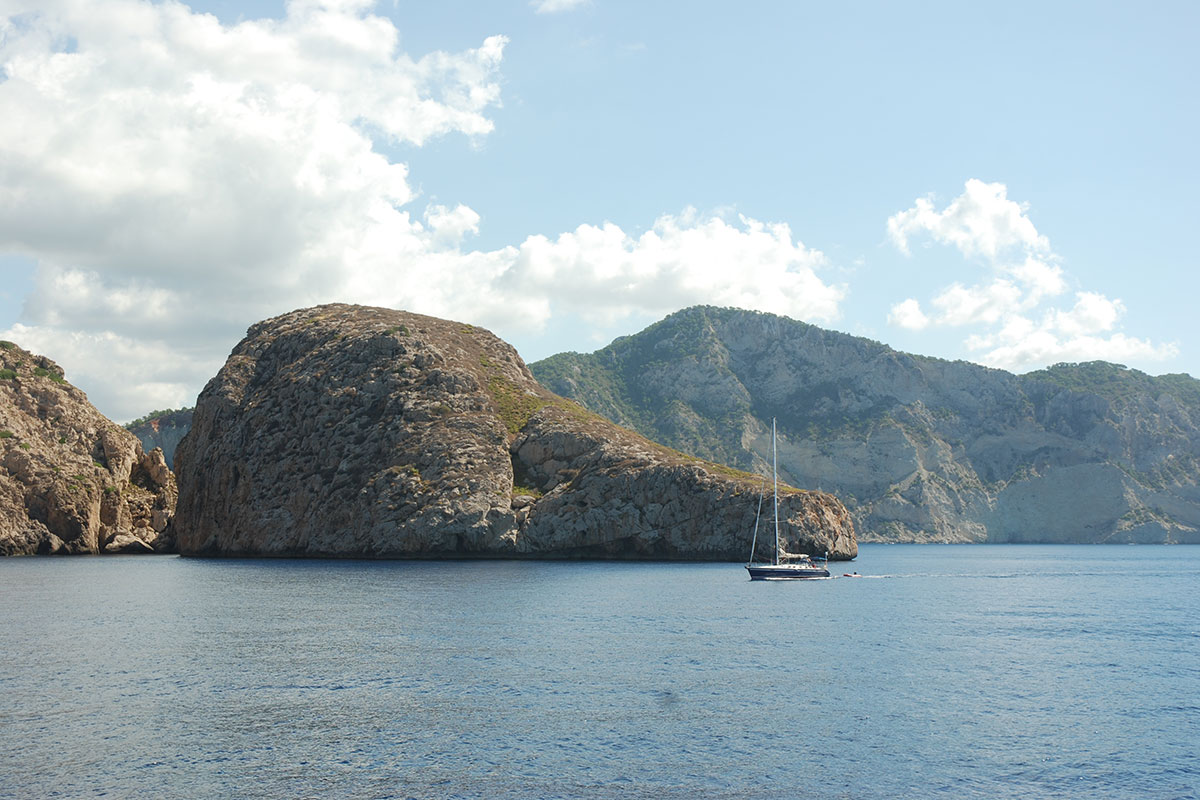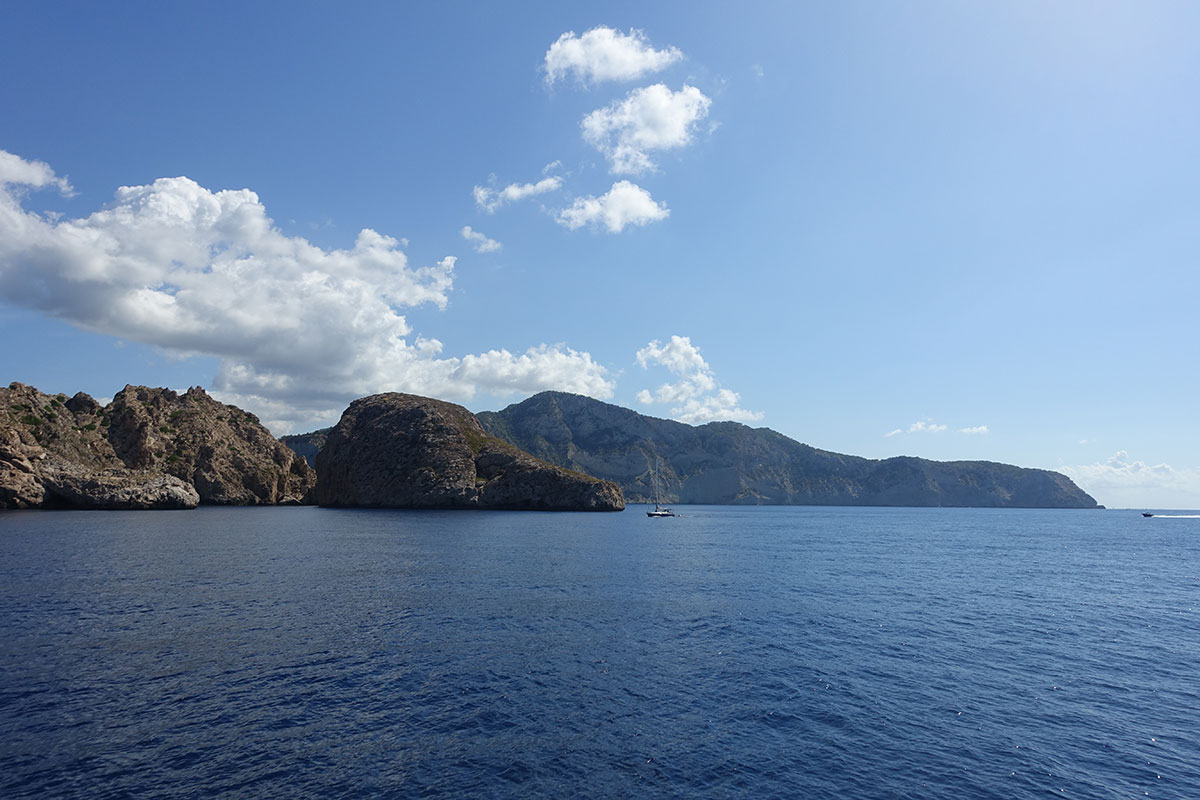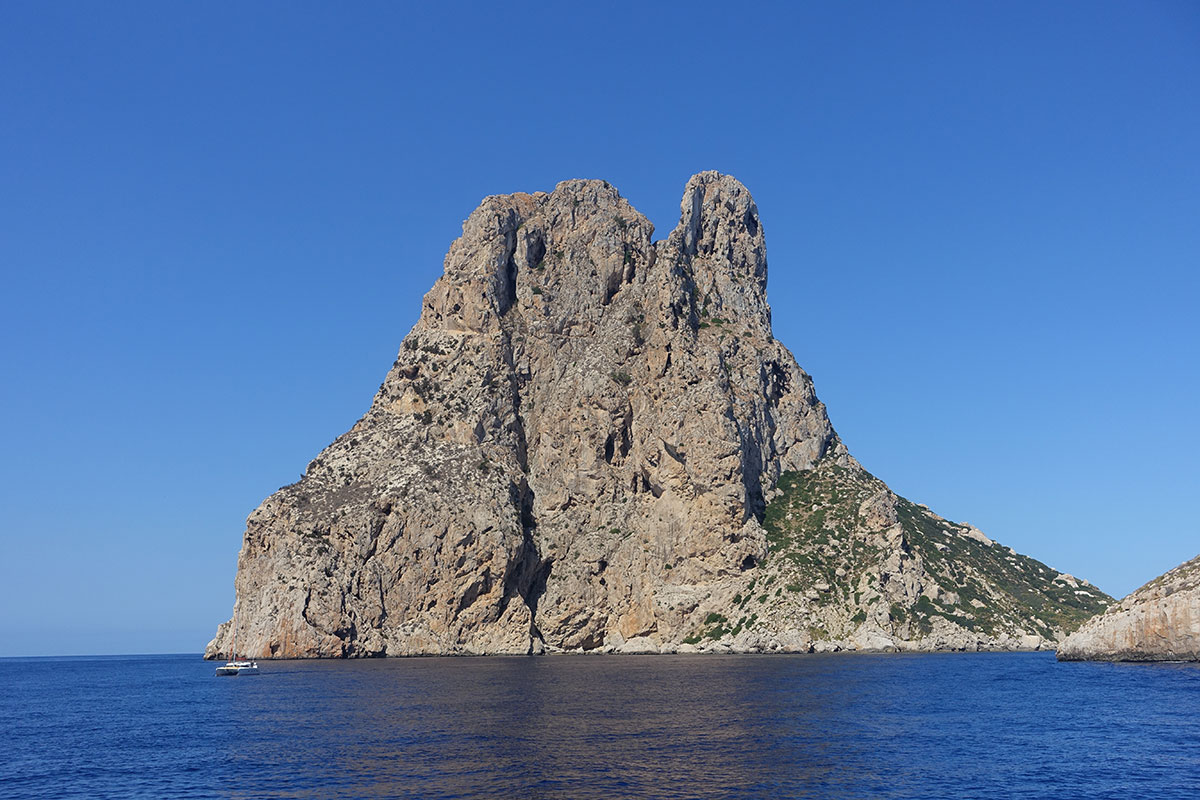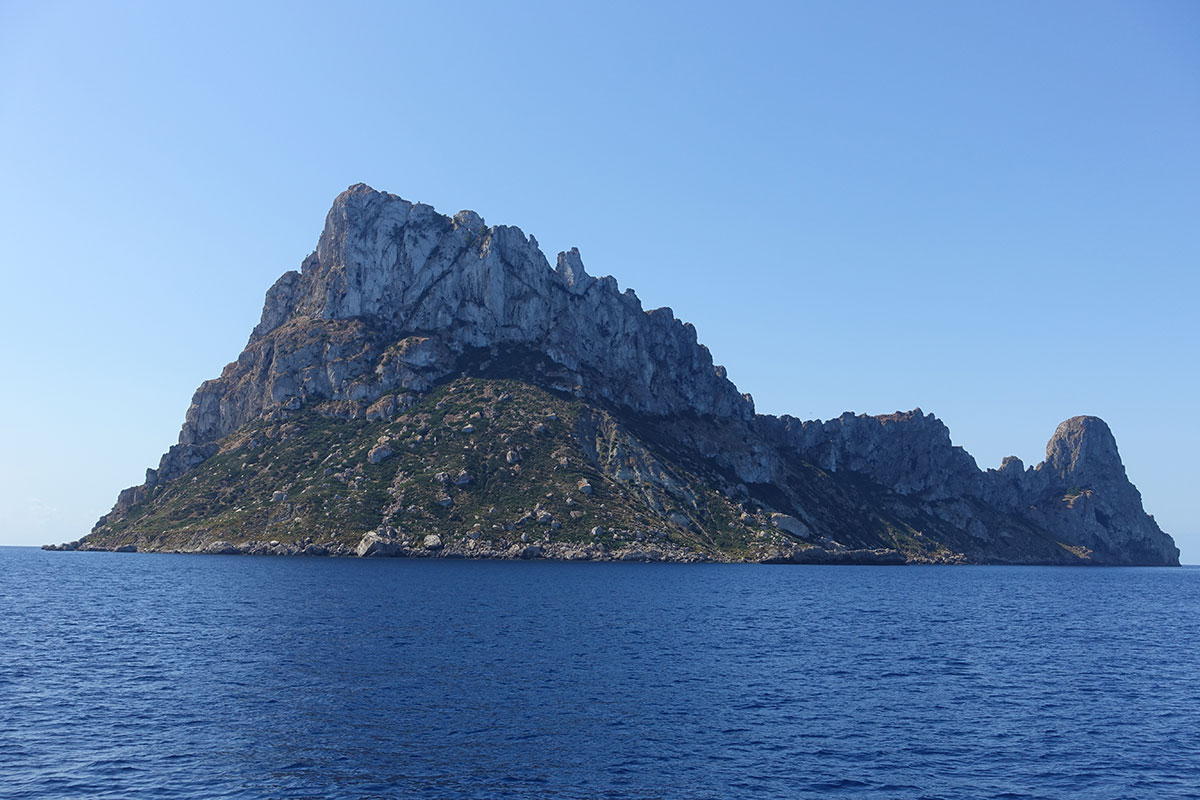Es Vedrà is definitely the most impressive islet of the whole Pityusic coast and it rivals the main hills of the island in size. With a height of 382 metres, it is not far off the 475 metres of sa Talaia de Sant Josep which is the island’s highest point. As it is less than two kilometres from the coast, together with neighbouring es Vedranell, it creates the impression of a mountain range emerging from the sea. The geology of both islets is quite specific and very different from the rest of the Pityusic coast due to its striated structure, in which older materials emerged and were superimposed on the more recent deposits.
The immensity of both rocks is particularly striking when you approach them from the sea, both because of their sheer size and because of the caves in their vertical walls and the dark parches of humidity. They were declared a nature reserve in 2002, together with the western islets.
From the Middle Ages onwards, es Vedrà was used by the local owning families to rear their goats, which ran wild on the island, defying gravity as they perched on the sharp ridges that make up its steep structure. Today it cannot be visited due to the risk of damaging its endemic flora which includes valuable species such as the es Vedrà chamomile (Santolina vedranensis), Punic thyme (Teucrium cossonii subespecie punicum) or palmetto (Chamaerops humillis).
Es Vedrà, moreover, has been shrouded in myth since the 19th century when the discalced Carmelite, Francisco Palau, arrived from Catalonia to set up home in es Cubells and decided to spend some time on the island as a hermit. During these reclusive periods of asceticism, the religious found refuge in a cave close to the peak where rain water accumulated, with his only company wild goats, sea hawks and the island’s blue lizards.
Palau left a record of his island sojourns which included a vision of strange shining lights that he identified as apparitions of the Virgin. With the arrival of the hippie movement, the peak was associated with all kinds of inflows and magnetisms, logically, none of which were ever exactly demonstrated.
At the western end of es Vedrà, there is a little lighthouse with a tower three metres high which flashes a white beam every five seconds from a height of 21 metres above sea level. It has a reach of 11 nautical miles and is accessed by a stairway that rises up through the rocks to the base of the tower. The original lighthouse was inaugurated in 1927, although a storm destroyed the tower in 1959 which was replaced with the current tower which is taller. It began operating automatically with acetylene gas and was maintained by lighthouse keepers from ses Coves Blanques in Sant Antoni.
Although it is considerably lower, the island of es Vedranell still measures a not inconsiderable 123 metres in height and shares the diverse flora and fauna of es Vedrà. Its rocky surface is also very steep and it has a curious horseshoe-shaped rock that can only be seen from the sea.

